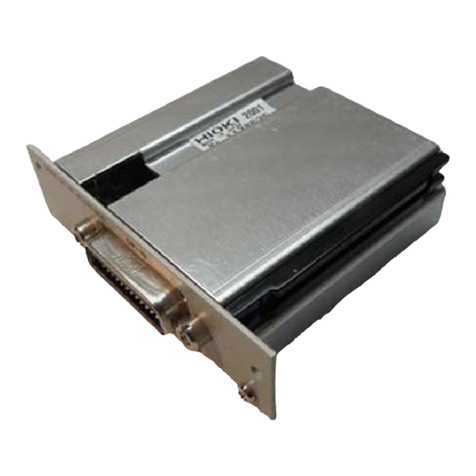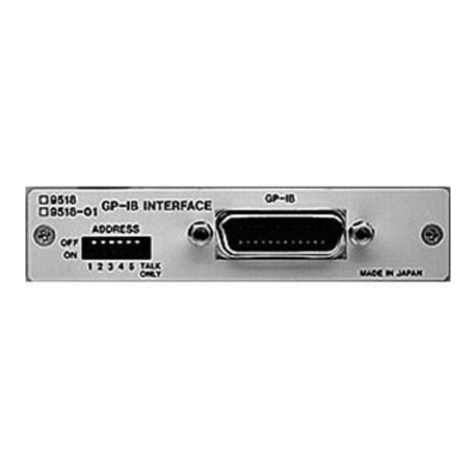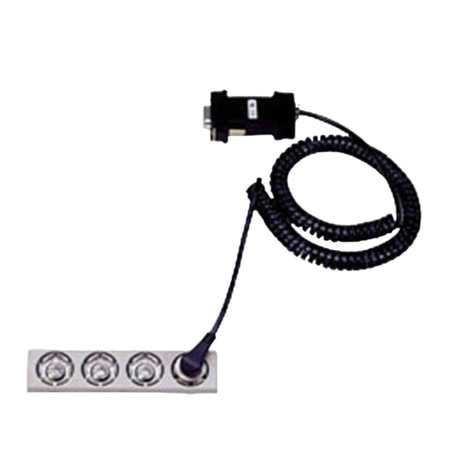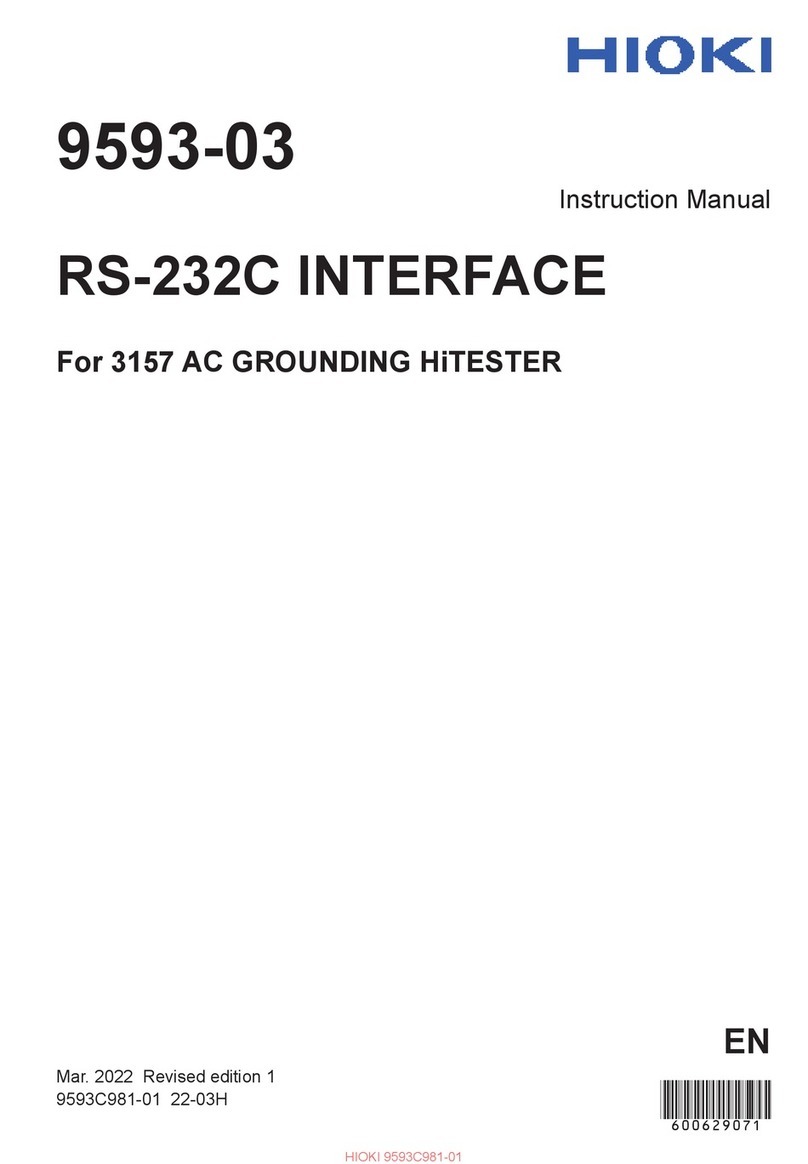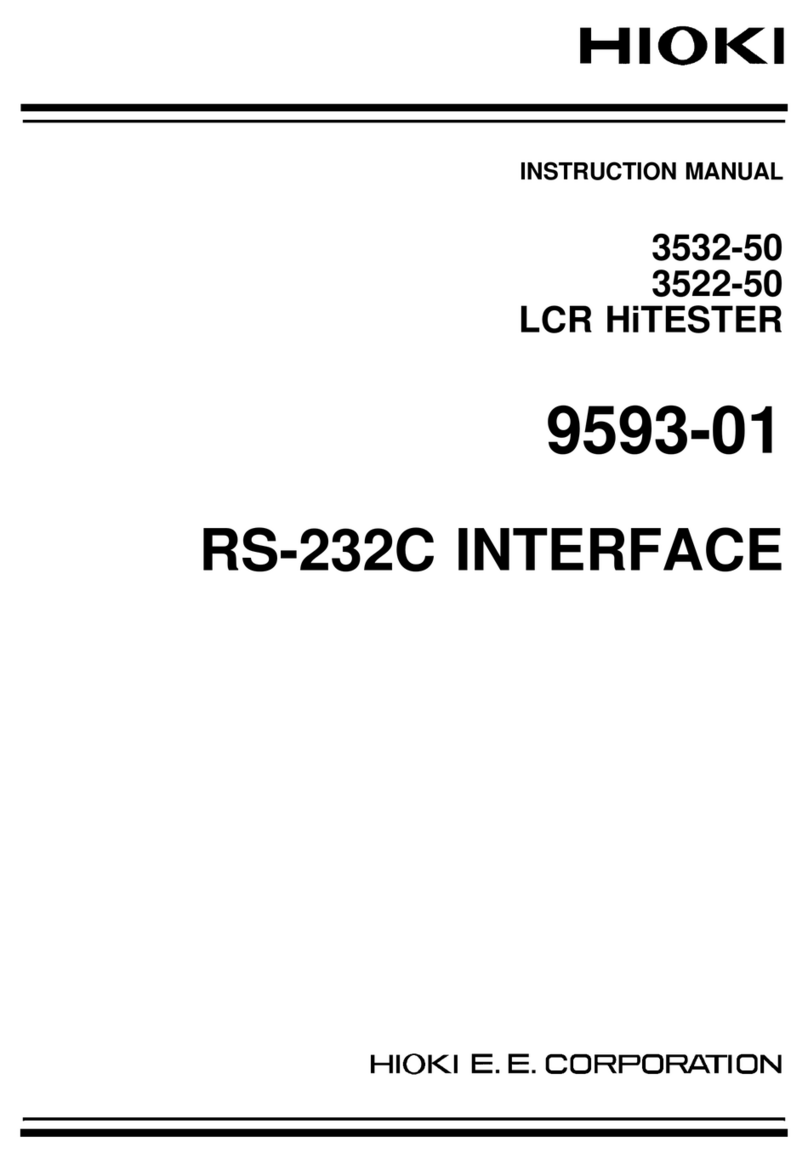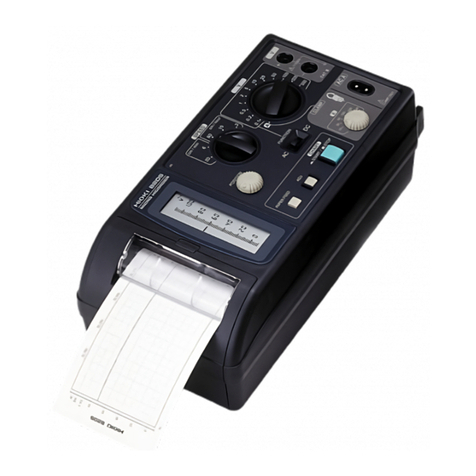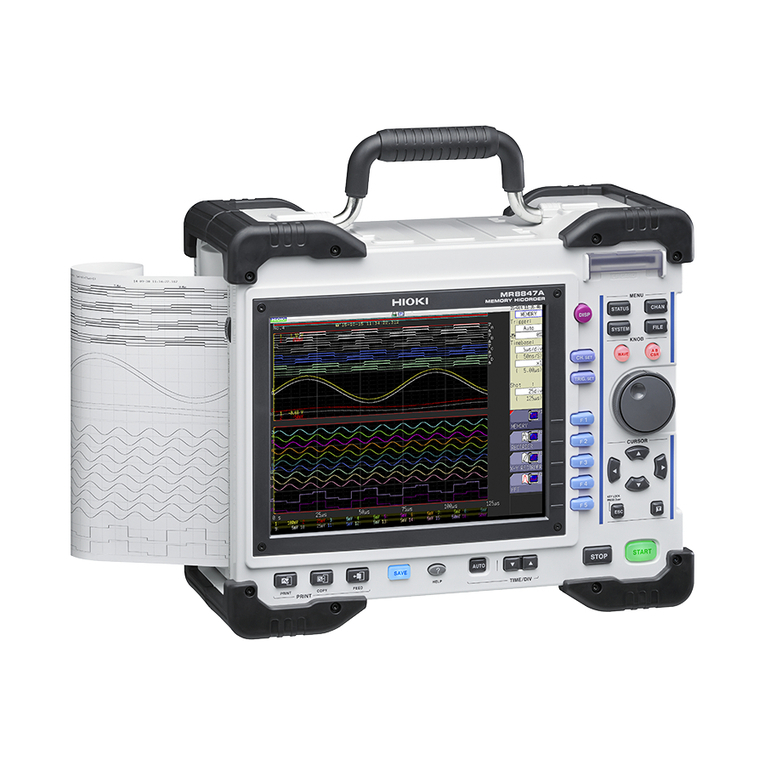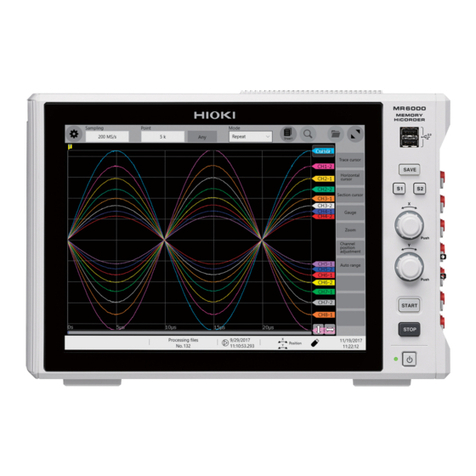
i
Built-in drive..............................................60
Removing storage devices ........................60
Formatting storage devices .......................61
2.8 How to Open the Media Box...............62
2.9 Supplying Power to the Instrument....63
Turning on the instrument .........................63
GND terminal (functional earth terminal)....63
Turning off the instrument..........................63
2.10 Setting the Clock ..................................64
2.11 Executing Zero-Adjustment.................65
2.12 Executing Calibration
(For the Instrument With Model
MR8990 Installed) ................................67
3 Measurement Method 69
3.1 Inspection Before Measurement ........69
3.2 Setting Measurement Conditions.......70
Sampling rate setting guideline..................71
3.3 Conguring the Input Channel
settings...................................................72
Analog channel.........................................73
3.4 Conguring the Level Trigger
Settings ..................................................75
3.5 Starting/Stopping a Measurement .....77
3.6 Saving Data Consisting of Items
Selected.................................................78
Save types and setting procedure .............78
Selective save ..........................................79
3.7 Measuring Signals With the
Auto-range Setting ...............................81
4 Analysis Method 83
4.1 Reading Measured Values
(Trace Cursors).....................................83
4.2 Handling Waveforms............................86
Scrolling through waveforms .....................86
Zooming in and out waveforms..................86
4.3 Loading Data on Your
Computer (Wave Viewer) ....................87
5 Specications 89
5.1 Specications of Model MR6000........89
General specications...............................89
Trigger......................................................93
Waveform screen......................................95
Setting screen ..........................................96
File...........................................................99
Calculation .............................................100
Memory division......................................103
Waveform search....................................103
Contents
Introduction........................................................1
Notations............................................................2
Conrming Package Contents........................4
Options (sold separately) ............................5
Safety Information ............................................6
Operation Precautions .....................................8
How to Refer to This Document ...................17
1 Overview 19
1.1 Product Overview and Features.........19
1.2 Name and Function of Each Part.......20
1.3 Screen....................................................24
Screen conguration .................................24
Explanation of each screen .......................25
1.4 Basic Operation ....................................27
Touch panel..............................................27
Rotary knob..............................................28
Changing screens and settings .................30
Quick-access menu ..................................32
Key lock ...................................................33
Help function (Displaying manuals) ...........33
Mouse operation.......................................34
Touch keyboard ........................................34
2 Preparing for
Measurement 37
2.1 Installing and Removing Modules ......38
Allocation of modules and channels...........39
2.2 Attaching Connection Cords ...............40
Connection cords (For measuring
voltage, frequency, or rotation speed,
and obtaining accumulations)....................41
Thermocouple (Temperature) ....................43
Strain gauge transducer............................44
Current sensor..........................................46
Acceleration sensor ..................................49
Logic probe (Measuring logic signals)........51
Connection cable
(For precisely measuring voltage)..............51
Connection cable
(for measuring high voltage)......................52
2.3 Supplying Power to Current
Sensors..................................................53
2.4 External Sampling (EXT.SMPL) .........54
2.5 Connecting the External Control
Terminals ...............................................55
2.6 Connecting the Instrument With
Computers.............................................57
2.7 Preparing Storage Devices
(Recording Media)................................59
SD memory card.......................................59
USB ash drive.........................................59
6
5
4
3
2
1
Index
